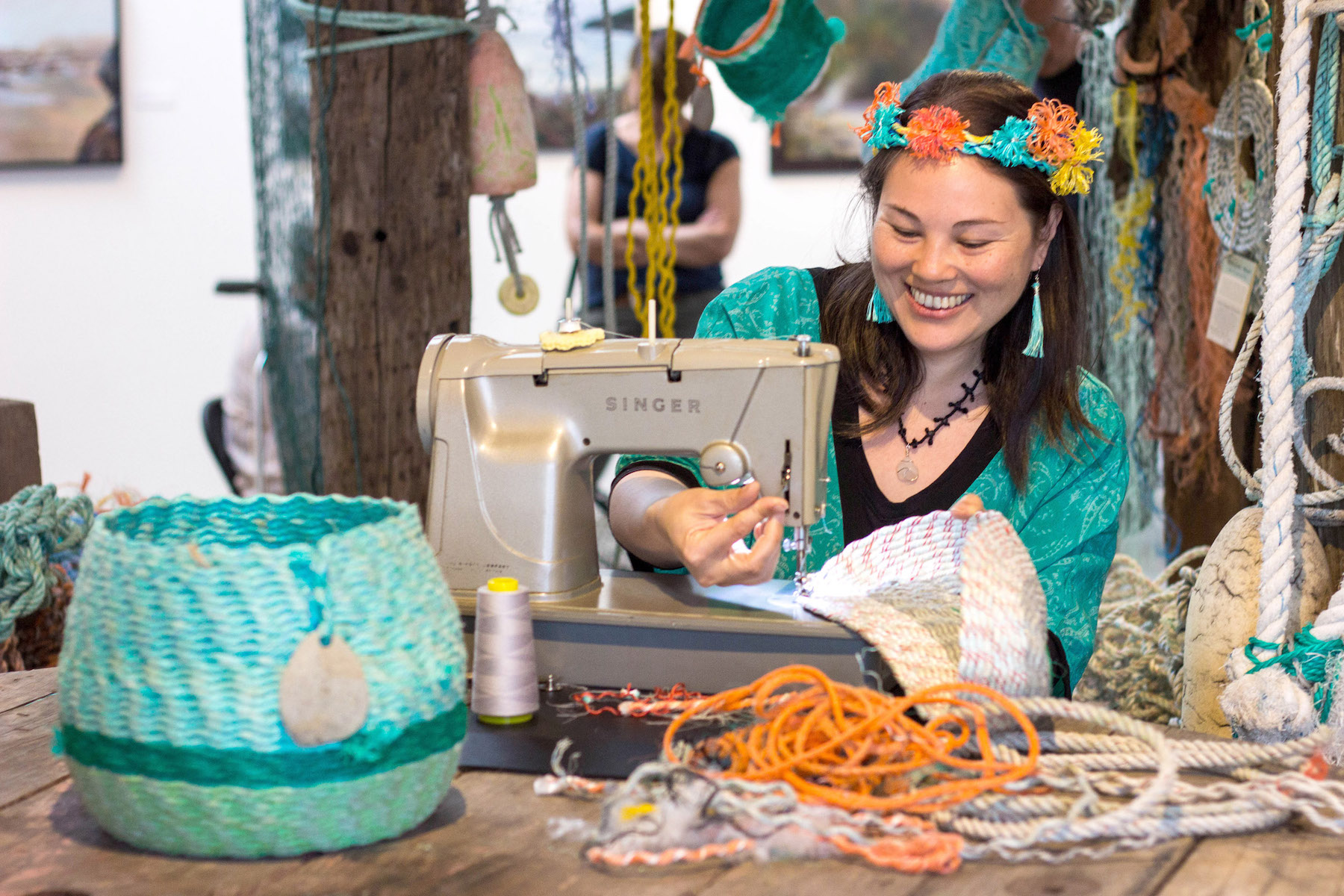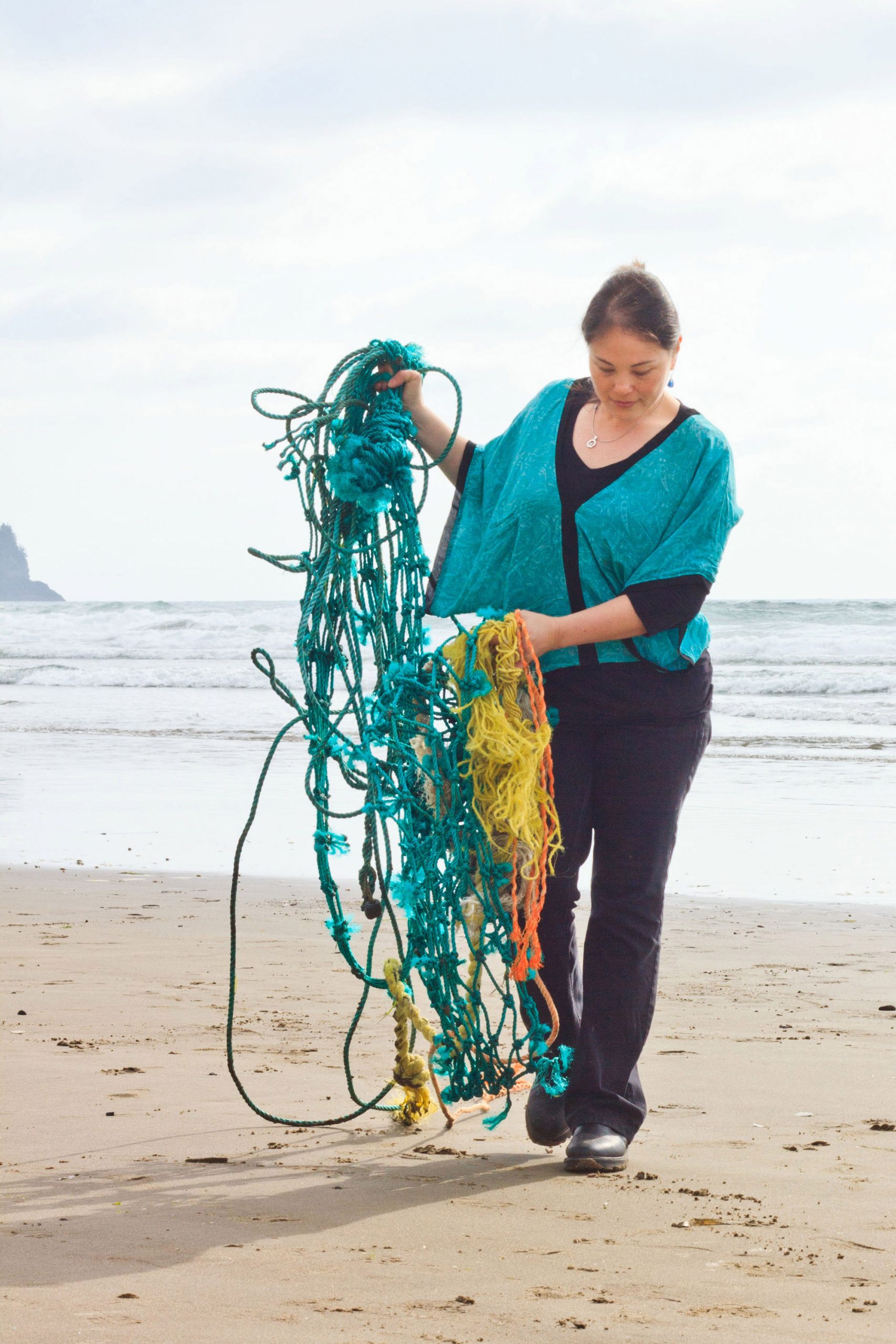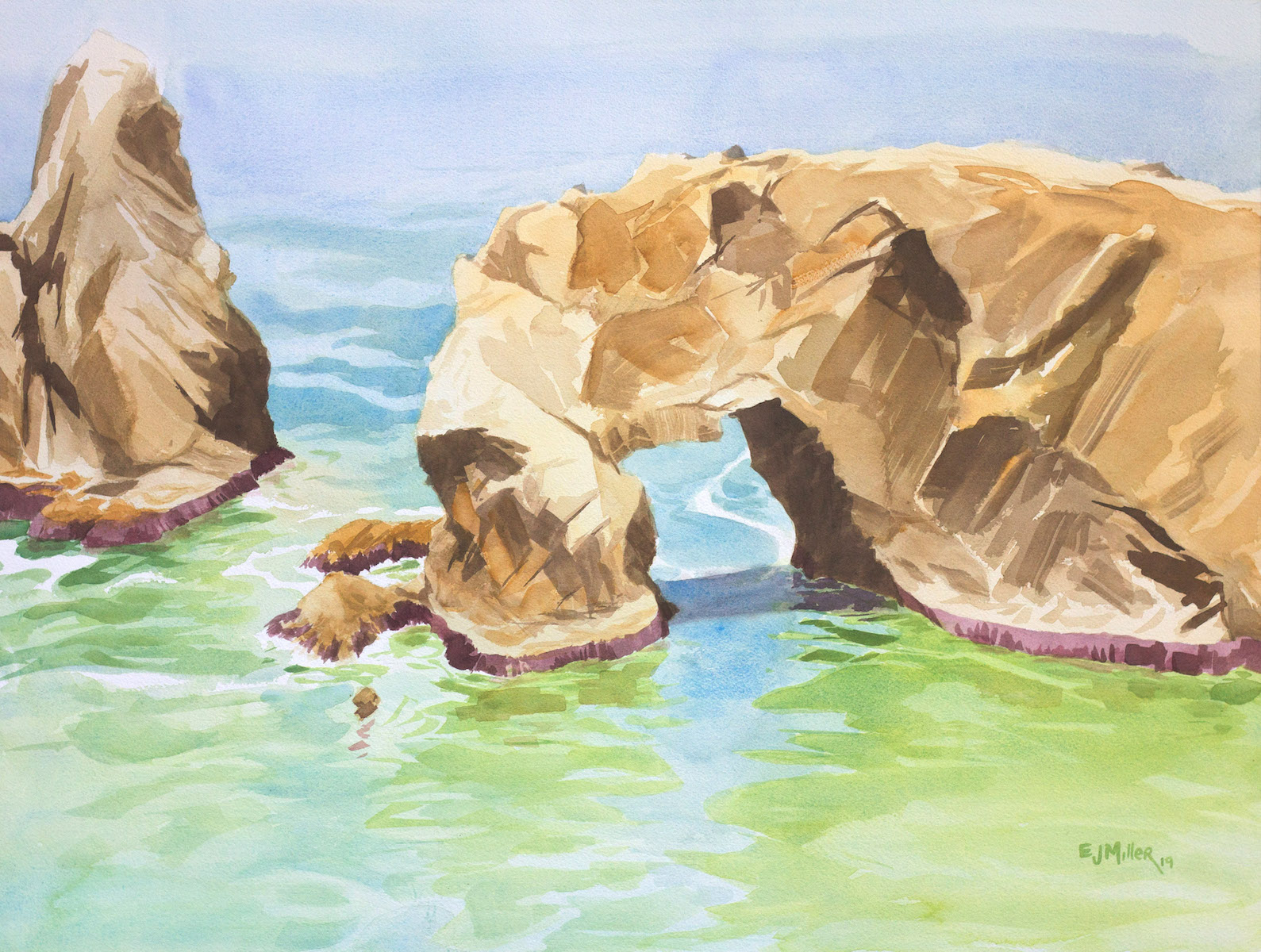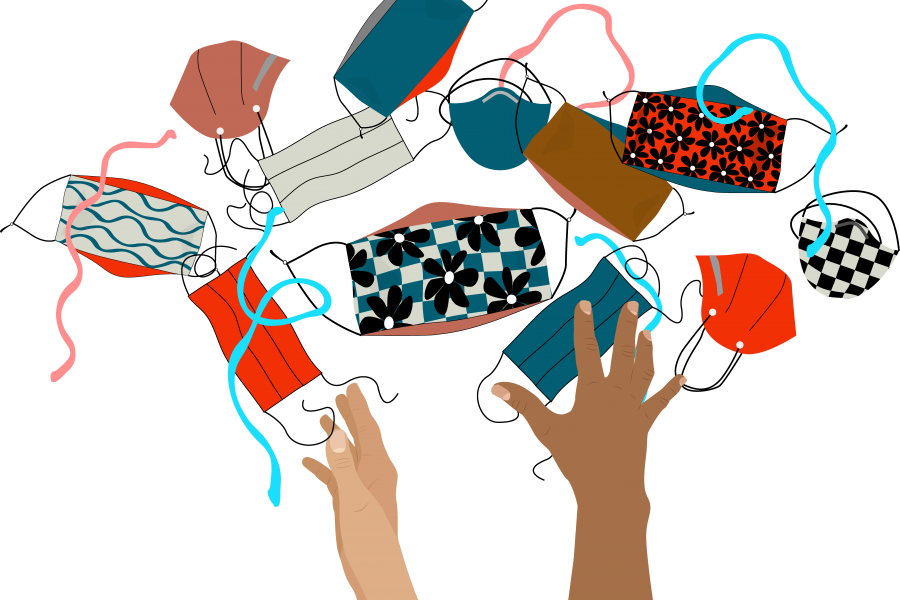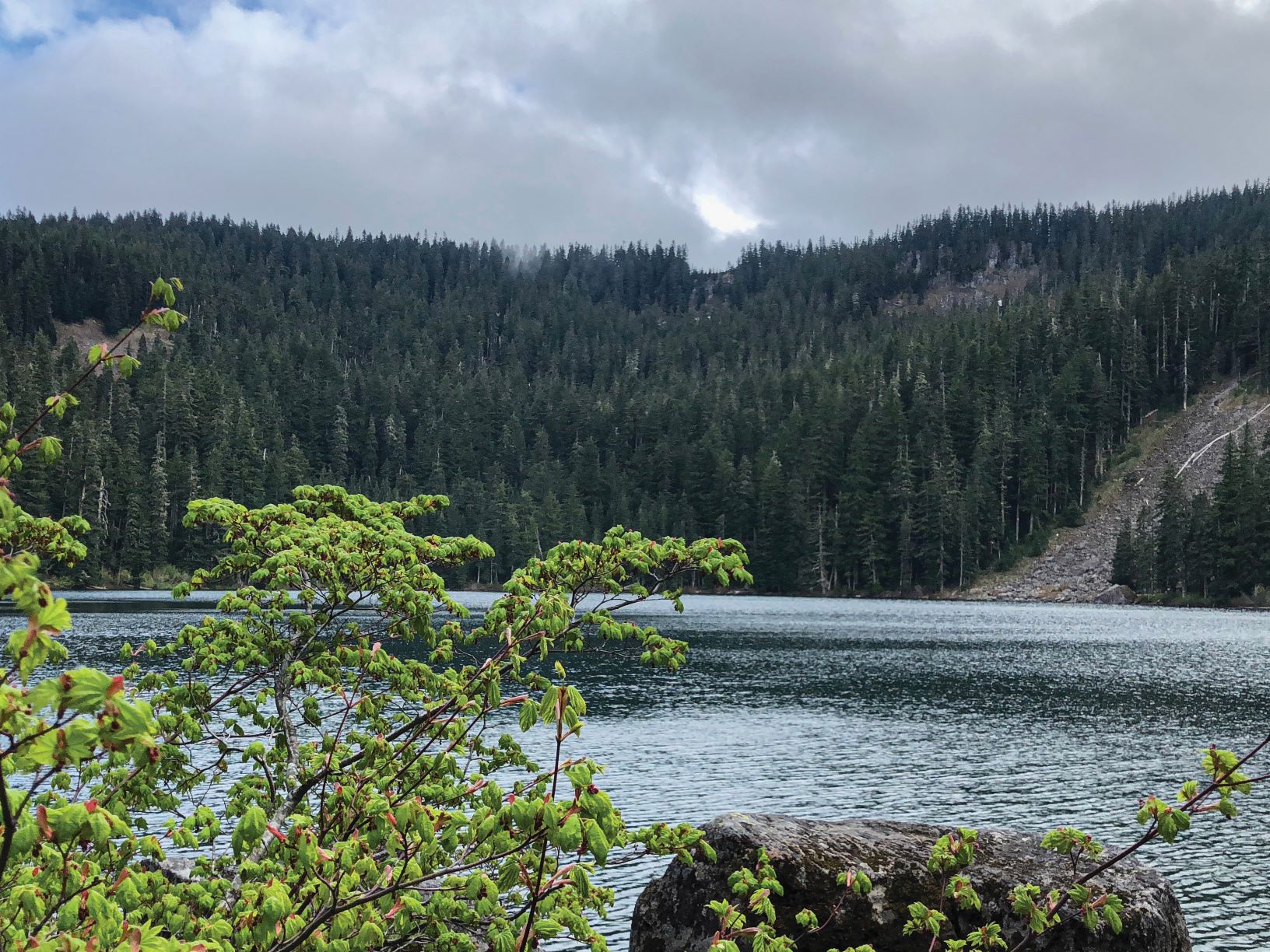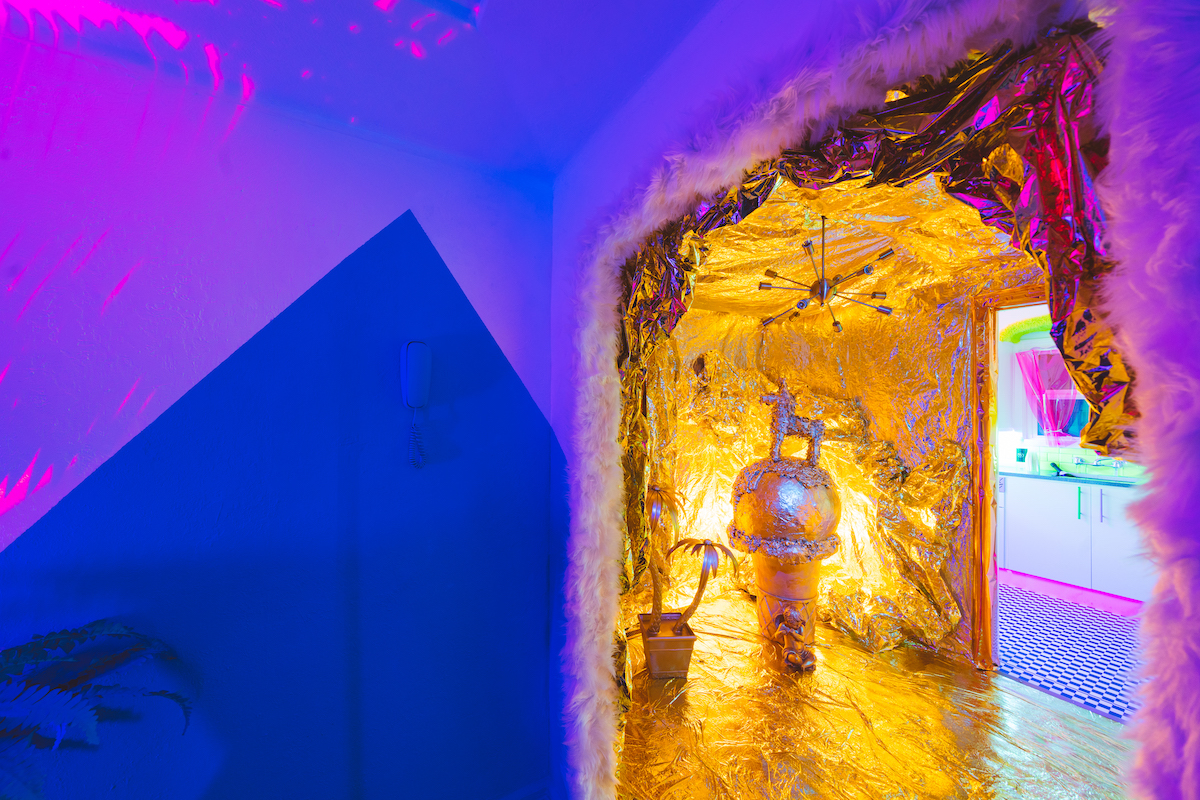With bright blues, vivid yellows and mossy greens, artist Emily Jung Miller’s hand-woven baskets immediately catch the eye.
The baskets are part of Miller’s Ghost Net collection, an ongoing project which has been repurposing ghost nets into art since 2015.
Ghost nets are fishing ropes lost at sea by fishing vessels, which often wash ashore onto beaches. The rope collected for Miller’s baskets are from beaches in Maine, Oregon and Kauai.
For ghost nets sourced in Oregon, Miller collaborated with local communities, including beach cleanup groups, to source her materials. Sometimes her materials come from friends who live along the Oregon coast who collect ghost nets they come across on the beach.
“They’re like ‘oh I’m going to save this for Emily, she’ll be able to do something with it,’” Miller said. “And that’s great too, that feeling of not just, oh no here’s more of the problem, but oh great, this can be part of the solution.”
For Miller, the power of the Ghost Net collection lies not only in calling attention to the issue of plastic pollution in the oceans, but in the empowerment of everyday people to consider how they can use their skills and talents to enact change. Miller expanded the sourcing of fishing ropes to include responsibly reclaimed materials from local fisheries, bringing those in the fishing industry into the search for solutions. Her sculptural installation “Undersea Garden” is made entirely of plastic marine debris and reclaimed fishing gear.
The collection also invites the public to make art with these materials, putting the power in the hands of the viewer to create art from what would otherwise be trash.
“I feel like there’s been a lot of media coverage about the problem and I think that, in a lot of ways, that way that’s been approached has been sort of easy to despair,” Miller said. “640,000 tons of ghost net enter the ocean every year, like what am I supposed to do about that? As an individual I can’t fix that. I think that’s where we get left a lot of the time. Now we’re onto the next segment, and everybody’s just like—‘Help?’”
By inviting the community to use their own hands and creative imagination to repurpose waste into art, Miller hopes to get people thinking about how they can do their part to help solve larger issues.
“You don’t have to be an artist to do this sort of work, to make a difference, to be creative,” Miller said.
One of Miller’s installations, “Ghost Net Landscape,” is a series of communal, interactive, traveling art made from fishing ropes—which will be on display at Artists Repertory Theater, where it will accompany the spring performance of The Children, April 4–May 15.
Beyond the Ghost Net collection, Miller’s art also includes photography, sculpture, public art installations and painting. Her current art installation, “1000 Moons,” has been launched for virtual exhibition, and will open for in-person viewing at the Patricia Reser Center for the Arts Mezzanine Gallery in Beaverton on June 21, 2022.
Miller started “1000 Moons” after the passing of her grandparents due to COVID-19.
“That put a full stop to everything in my life,” Miller said. “I couldn’t keep doing the same work I had been doing. I had a choice… I can say nothing, or I can talk about this.”
The installation consists of 1,175 circles cut from paper Miller made from kelp, sheet music and other materials linked to the history of her grandparents, each representing a full moon within her grandmother’s 94 years of life. The moons hang from the ceiling, surrounding the viewer with the physical representation of these years.
“It’s been a process-based project for me,” Miller said. “I didn’t want to wait until I was done to talk about it because that would have been years.”
“1000 Moons” also offers a critique on the grief process in the United States—and the lack thereof. On her website, Miller shares that the absence of traditions of mourning and grief in the U.S., especially “during a moment in history when existing grief rituals have been scattered,” means that her work has become a new tradition “to understand, honor, and process the length of a life.”
The virtual community conversations that have accompanied “1000 Moons” stem from Ghost Net highlighting the value of community work, especially for Miller as an artist.
“What a difference it makes to my ability to keep going and working on really difficult topics,” she said.
Miller is one of seven new artists in the Portland Art Museum’s Rental Sales Gallery. Curious viewers can catch an exhibition of her watercolor work at the New Artists Show, open now through the end of March.

